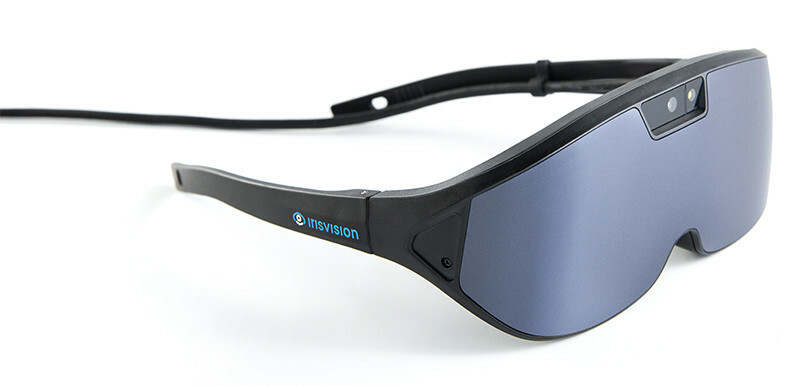Voice-Activated Assistive Devices: Empowering the Visually Impaired Through Innovation
Voice-Activated Assistive Devices: Empowering the Visually Impaired Through Innovation
Blog Article
Discover Advanced Assistive Instruments for People With Visual Disabilities
The landscape of assistive technology for people with visual problems is evolving quickly, providing an array of ingenious devices that improve freedom and engagement. From wise glasses that flawlessly merge visual input with auditory support to innovative navigation applications that redefine spatial recognition, these tools are improving possibilities.
Smart Glasses Innovations
Smart glasses represent a considerable development in assistive innovation for individuals with visual problems. Equipped with video cameras and sensors, smart glasses can record real-time aesthetic information, which is after that refined and conveyed to the individual through sound comments or haptic feelings.
Additionally, improvements in fabricated knowledge have better enhanced the capabilities of smart glasses. Equipment discovering algorithms can identify faces, reviewed message, and recognize things, making them important devices for day-to-day jobs. Users can obtain auditory signs that provide context regarding their environment, cultivating independence and confidence.
Furthermore, the ergonomic design and lightweight nature of many smart glasses make them ideal for extended use, ensuring comfort while improving capability. As these gadgets remain to develop, they hold the possible to change the way individuals with aesthetic problems experience their day-to-days live, linking the gap between availability and innovation. The continuous research and growth in this field pledge to expand the opportunities for wise glasses, making them a necessary component of modern-day assistive tools.
Navigating Application and Equipment
Numerous navigation applications and tools have actually become crucial sources for individuals with visual disabilities, significantly enhancing their capability to traverse unfamiliar environments. These innovations leverage GPS functionality, audio cues, and real-time data to provide customers with accurate navigating aid.
One prominent example is the Aira application, which links individuals to qualified agents that can supply visual descriptions of environments and navigating support with an online video clip feed. This solution boosts the user's spatial awareness and confidence while browsing. Another significant device is Seeing Eye GPS, which offers voice-guided navigating and sights, allowing customers to access important information regarding their environments.

As modern technology remains to advance, the development of a lot more sophisticated navigation tools guarantees to more empower people with visual problems, facilitating smooth movement and combination into varied environments. Such innovations are critical in promoting an extra comprehensive culture.
Braille Technology Improvements
Over the last few years, developments in Braille technology have dramatically transformed how individuals with aesthetic disabilities gain access to information and engage with the globe around them. The advancement of mobile Braille displays has actually transformed analysis by allowing customers to link wirelessly to computers, smartphones, and tablets. These devices convert text right into Braille in real-time, enabling smooth communication with electronic content.
Additionally, innovative Braille printers have emerged, improving the production of tactile products. Modern embossers are faster and extra efficient, permitting the quick production of Braille records and academic products. This effectiveness lowers the moment and cost connected with creating Braille sources, making them extra available to schools and organizations.
Additionally, the combination of Braille with various other modern technologies, such as synthetic knowledge and artificial intelligence, has actually opened up brand-new opportunities for personalized knowing experiences. Voice acknowledgment and synthesis modern technologies can enhance Braille, offering an inclusive method to info circulation.
As the need for comprehensive education and learning and office atmospheres grows, these technological improvements play an important function in equipping individuals with aesthetic disabilities, ensuring they have equivalent accessibility to details and possibilities in numerous facets of life.
Wearable Devices for Freedom
An expanding selection of wearable tools is boosting self-reliance for individuals with aesthetic problems, using ingenious solutions that boost navigating and daily living. Braille displays and notetakers. These devices make use of sophisticated modern technologies to give real-time comments and assistance, promoting freedom in various atmospheres

Wearable innovation likewise consists of smartwatches that can be programmed with access functions, enabling individuals to obtain notifications, track their places, and even call for help with the touch of a Visit Your URL switch. Additionally, some tools incorporate man-made intelligence to examine the setting, offering sound descriptions of nearby items or individuals.
Voice-Activated Assistive Solutions
Leveraging voice-activated assistive remedies has actually changed the landscape of support for individuals with visual disabilities, offering hands-free communication and accessibility to a variety of tasks. These modern technologies make use of all-natural language handling and expert system to make it possible for customers to carry out daily activities through easy voice commands.

Furthermore, recent advancements in voice acknowledgment accuracy have improved the customer experience substantially, fitting diverse accents and speech patterns. This inclusivity makes certain that even more individuals can take advantage of these review of optometry modern technologies, promoting a greater feeling of autonomy.
Conclusion
In verdict, the advancement of advanced assistive gadgets substantially enhances the independence and lifestyle for individuals with visual impairments. Technologies such as clever glasses, navigating apps, Braille modern technology, wearable gadgets, and voice-activated solutions jointly promote an even more inclusive environment. These technologies equip customers to navigate their surroundings with self-confidence and engage more fully with the globe, ultimately advertising greater availability and equivalent opportunities for individuals encountering visual difficulties.
The landscape of assistive modern technology for individuals with aesthetic problems is evolving rapidly, offering a variety of cutting-edge tools that enhance freedom and interaction.Smart glasses stand for a substantial advancement in assistive modern technology for people with aesthetic impairments. As these gadgets proceed to advance, they hold the possible to change the way people with aesthetic problems experience their day-to-day lives, bridging the gap between availability and modern technology.In recent years, advancements in Braille technology have dramatically transformed how individuals with visual disabilities access information and involve with the world around them. These modern technologies empower individuals to browse their surroundings with self-confidence and engage even more completely with the world, ultimately promoting greater access and equal opportunities for people encountering aesthetic difficulties.
Report this page